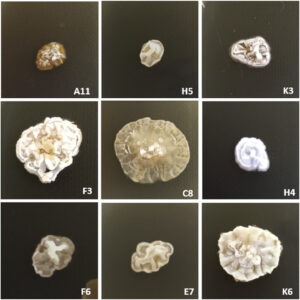
A cloth fragment discovered in a royal tomb in Greece could be the remains of a tunic once worn by Alexander the Great, according to recent claims by Professor Emeritus Antonis Bartsiokas of Democritus University of Thrace. Found in a tomb near Vergina, a site historically tied to Macedonian royalty, this garment is now believed by Bartsiokas to have belonged not to Alexander’s father, Philip II, as previously thought, but to Alexander’s half-brother Philip III Arrhidaeus. Arrhidaeus assumed the title of king after Alexander’s death, though his capacity to rule was limited by a mental disability.
Debate Surrounding the Tomb’s Occupants and Origins
The discovery was published in Journal of Field Archaeology. The discovery of the garment was made in 1977 within a gold chest in a tomb traditionally associated with Philip II. However, Bartsiokas argues that this tomb actually houses the remains of Arrhidaeus and his wife, Eurydice, basing his conclusion on historical records, wall art in the tomb, and an analysis of the garment itself. The tunic, he asserts, may have originally belonged to Alexander but was passed down to Arrhidaeus upon Alexander’s death, symbolising continuity within the royal lineage. Testing by other scholars had previously shown that the cloth, dyed purple and containing layers of cotton and huntite, resembled garments worn by Persian kings, adding weight to Bartsiokas’ argument.
Scholars’ Mixed Responses to the Findings
Experts have responded with varied opinions on Bartsiokas’ claims. Senior researcher Hariclia Brecoulaki of Greece’s National Hellenic Research Foundation disputed Bartsiokas’ identification of the garment as a tunic, suggesting instead that it more closely resembles a scarf used to wrap bones. Additionally, Athanasia Kyriakou, director of the Vergina excavation project at Aristotle University, noted that Bartsiokas had not directly examined the materials and criticised the findings as speculative.
Other scholars provided cautious support. Professor Susan Rotroff, a classics scholar at Washington University in St. Louis, found Bartsiokas’ conclusions plausible, noting that the garment’s cotton fibres align with a timeline after Alexander’s Persian conquests. Richard Janko, a classical studies professor at the University of Michigan, described the research as intriguing but emphasised that the cotton may have reached Greece through trade routes accessible to Philip II.
The debate over the identity of the tomb’s occupants continues, but Bartsiokas’ hypothesis has spurred renewed discussion on the artefacts and their historical significance in connection with Alexander the Great.
For the latest tech news and reviews, follow Gadgets 360 on X, Facebook, WhatsApp, Threads and Google News. For the latest videos on gadgets and tech, subscribe to our YouTube channel. If you want to know everything about top influencers, follow our in-house Who’sThat360 on Instagram and YouTube.





